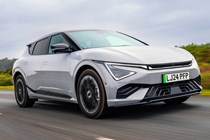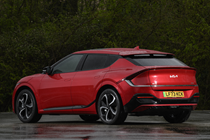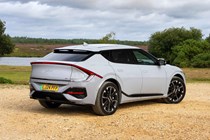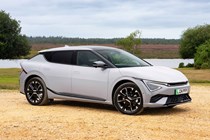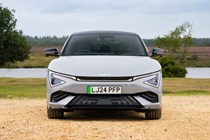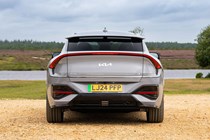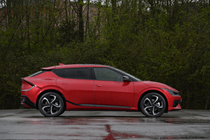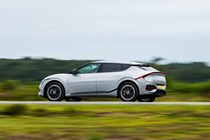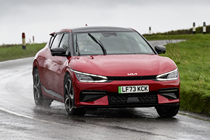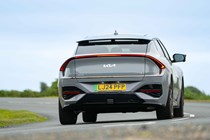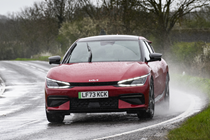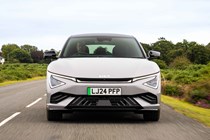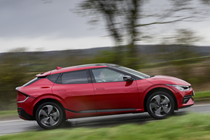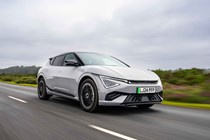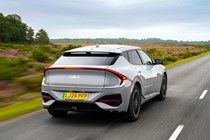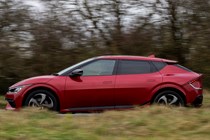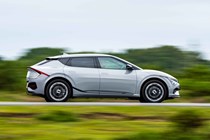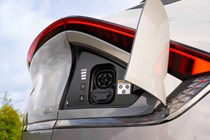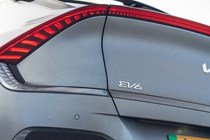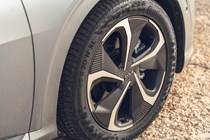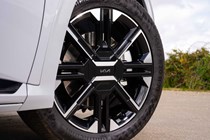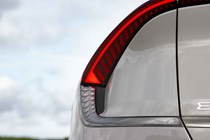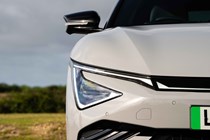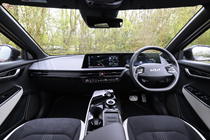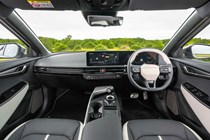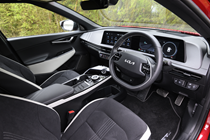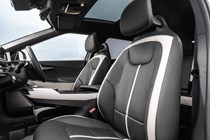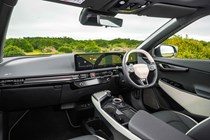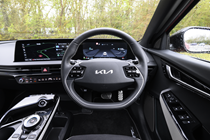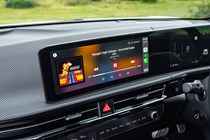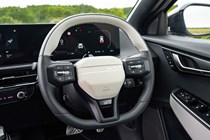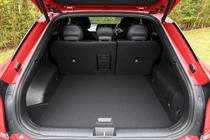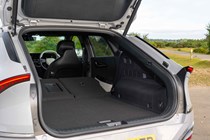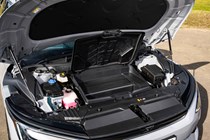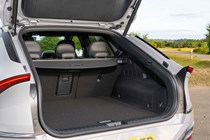Kia EV6 engines, drive and performance
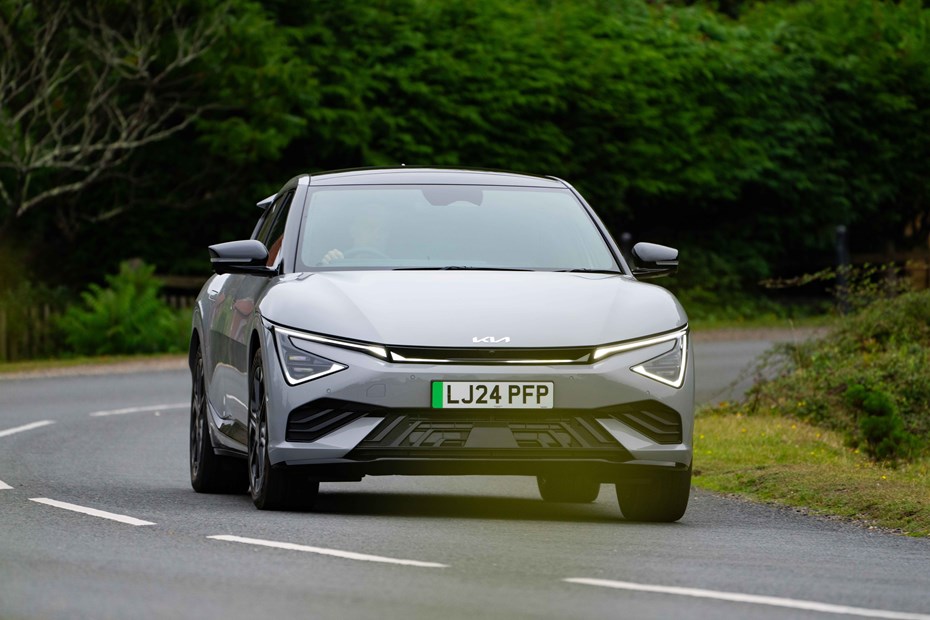
- All three powertrains pack a punch
- Acceleration ranges from quick to startling
- Handling is good enough to engage enthusiasts
Electric motors
The Kia EV6 is available with a choice of three electric powertrains. The entry-level rear-wheel drive model develops 230hp and 350Nm of torque, which Kia says is enough for a 0–62mph time of 7.7 seconds and a top speed of 115mph. To put that another way, this five-seat, two-tonne family SUV accelerates as quickly as a BMW 220i.
In the middle of the EV6 line-up is a twin motor, four-wheel drive powertrain with 324hp and a whopping 605Nm of torque. This is the powertrain we tried in our facelifted car – and it’s more than fast enough. It can dispatch the 0–62mph sprint in 5.3 seconds (which is bordering on Volkswagen Golf R territory) and will hit 116mph flat out.
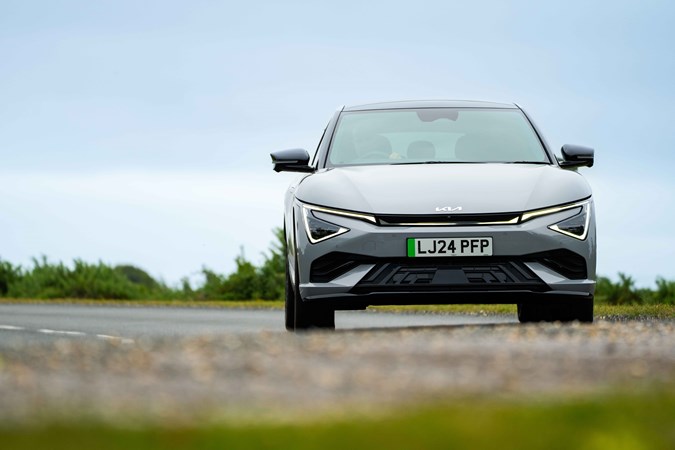
Kia has also facelifted the EV6 GT, and the performance its powertrain offers is comical. It’s fast enough to bait supercars. It also has two electric motors, but they’ve been cranked up to eleven and produce an enormous 585hp and 740Nm of torque. The result? A 0–62mph time of 3.5 seconds. If that’s piqued your interest, check out our dedicated Kia EV6 GT review to learn more.
Now, all three powertrains are teamed with Kia’s 84.0kWh battery pack. As we’ll explain in the next section, this offers more range and faster charging times.
What’s it like to drive?
- It’s feels fast and sporty (for an SUV)
- Sharp steering and keen handling
- Driver assistance tech gets in the way
We really like the way the EV6 drives, which is unusual considering it’s an SUV. Often, sporty SUVs feel a quite contrived to pedal quickly because their tall ride heights and heavy builds mean they’re constantly battling the laws of physics (and losing).
But Kia has set the EV6 up masterfully. You’re still aware of its weight in the corners, but it’s far flatter than a car of this stature has any right to be. It’s also remarkably good fun to attack hairpins in, especially in Kia’s 324hp GT-Line S trim.

We never grew tired of matting the accelerator and slingshotting the car out of bends. If you’re talented enough, you can even live out your rally driver fantasies and slide the car out of the corner on power. And while we know that most drivers will never use their EV6s in this fashion, the fact that the platform can deliver that experience speaks volumes of Kia’s engineering department. It’s a very well-balanced car.
The steering system is part of the reason why it’s so fun. For a modern car, we found it to be very direct and surprisingly adjustable, which gave us enough confidence to consider engaging in a spot of hooliganism. On the motorway it’s also very settled. It doesn’t feel twitchy or nervous. If we had to be critical, it doesn’t offer a great deal of feedback – but very few cars do these days.
Like other EVs, the Kia’s power is customisable, and we switched between its Sport, Eco and Normal drive modes throughout our drive. Sport mode gave us the neck-snapping acceleration we’ve come to expect from EVs today – and Eco mode softened it. Normal was somewhere between the two.
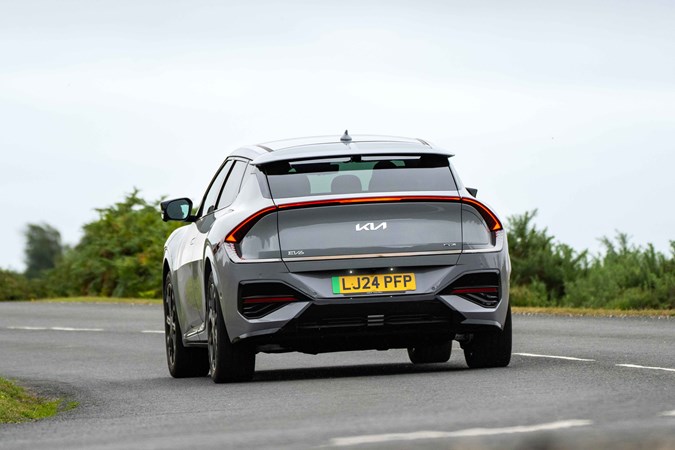
The EV6 also lets you choose between brake regeneration levels, using the paddles on the rear of the steering wheel. On its maximum setting, you can drive around without using the brake pedal, which is incredibly relaxing around town. It’s less useful on the motorway, though. We set it to its minimum to avoid startling the drivers behind, as the car would act like we’d mashed brakes in one-pedal mode.
Whether or not the EV6’s ride will suit you depends on your personal tolerances. Our Deputy Editor rather liked the EV6’s firm suspension, but he’s got a penchant for sporty cars – so that’s to be expected. If you’re stepping out of a BMW, we reckon you’ll find the EV6 quite familiar. But if you value a smooth ride over handling precision, both the Audi Q4 e-tron Sportback and Hyundai Ioniq 5 will better suit your needs.


